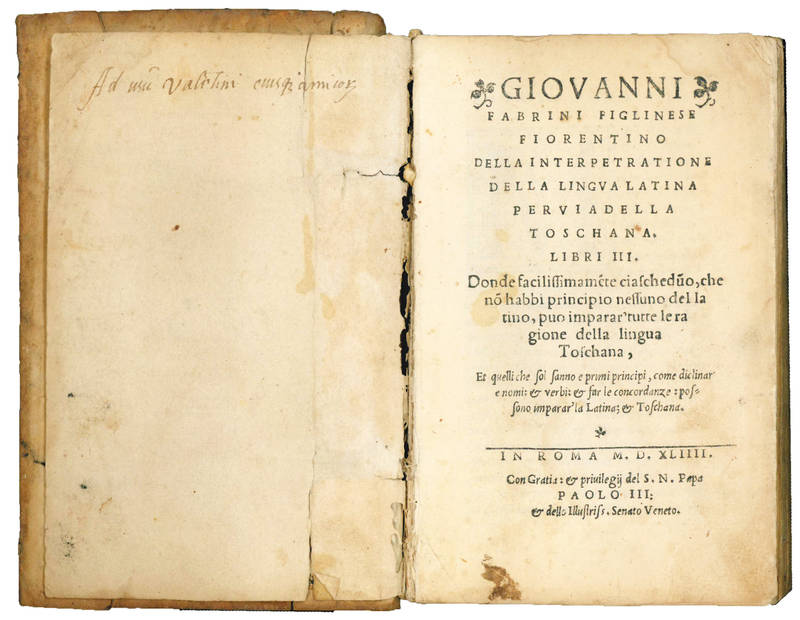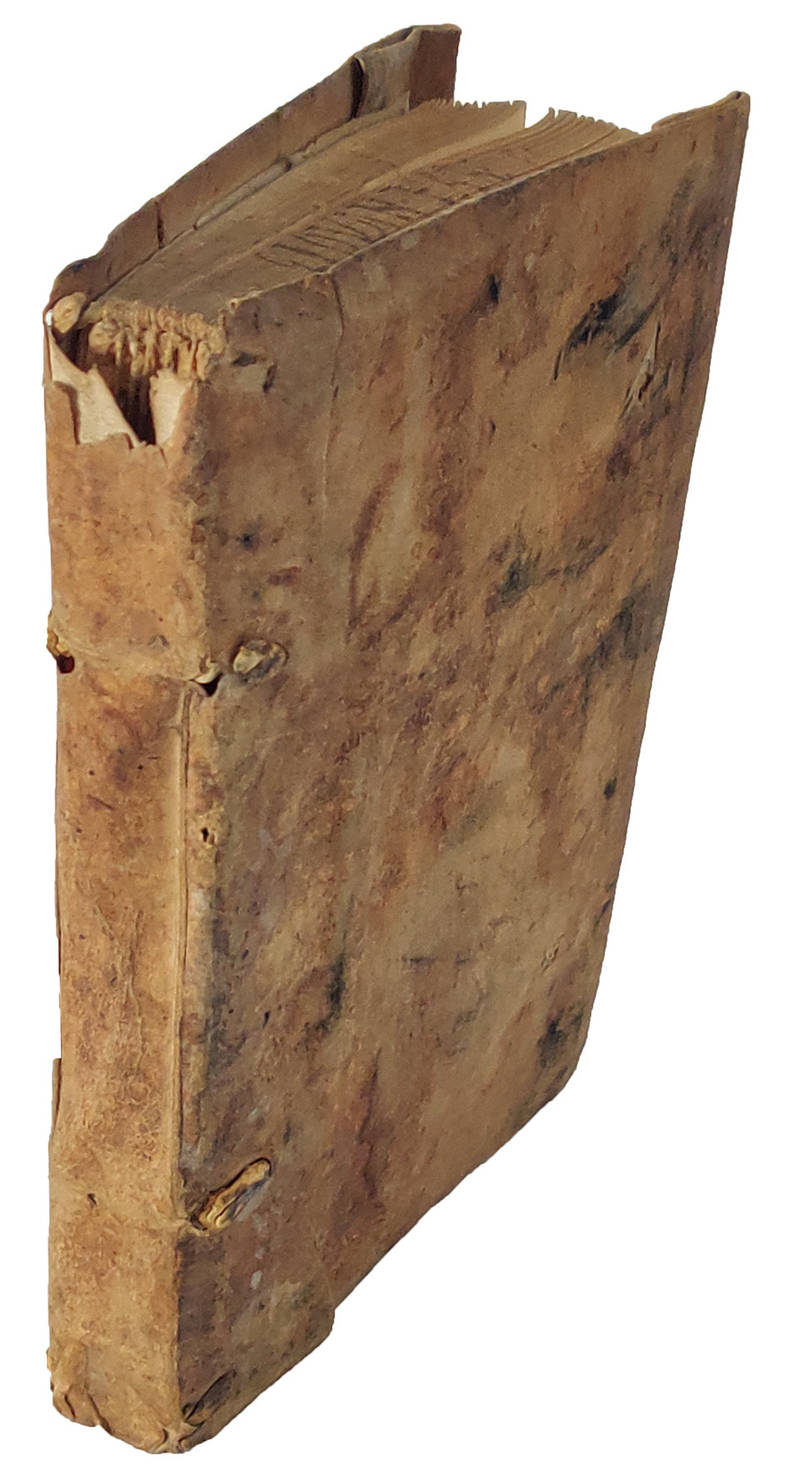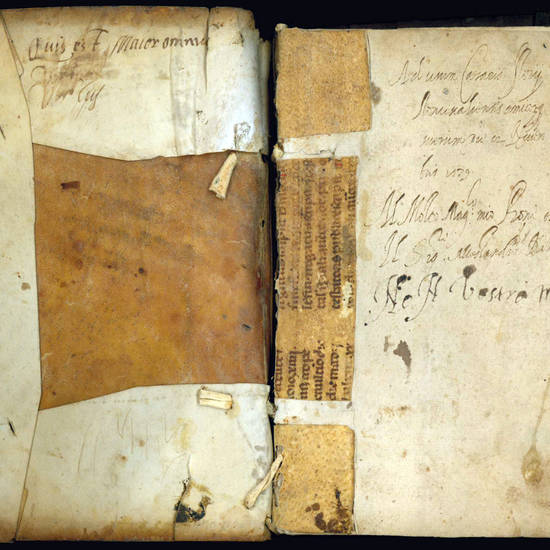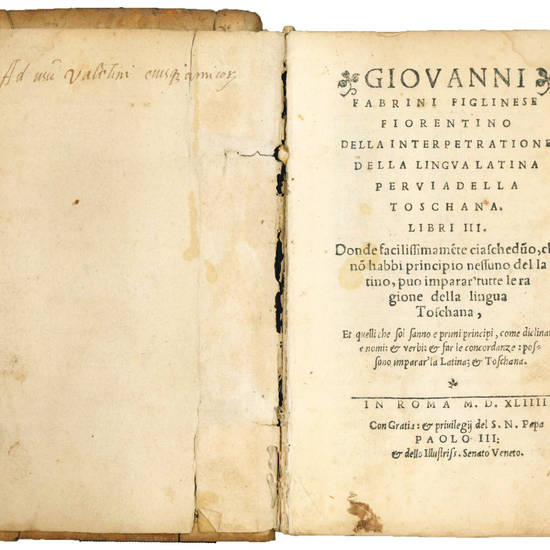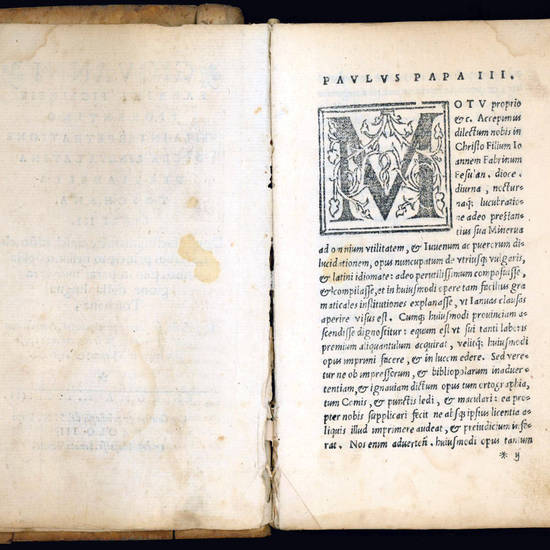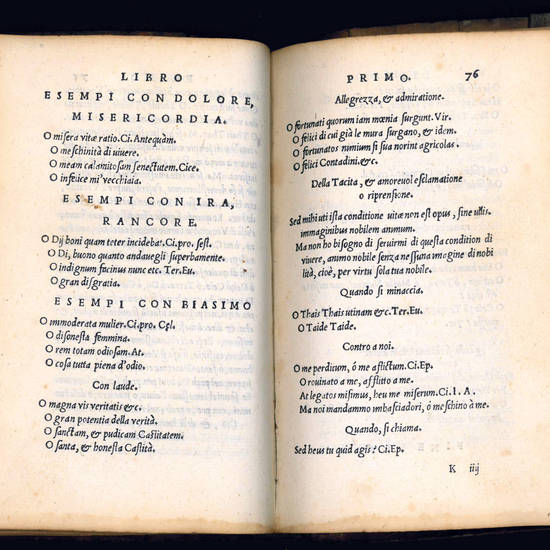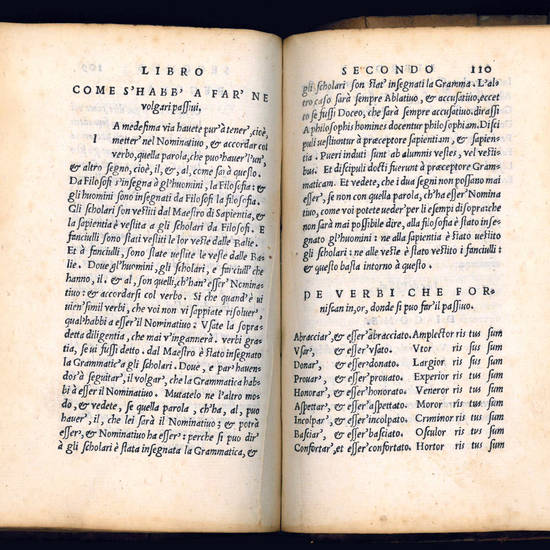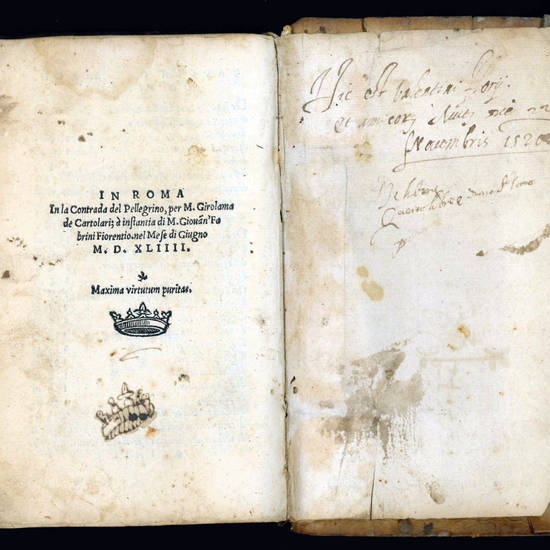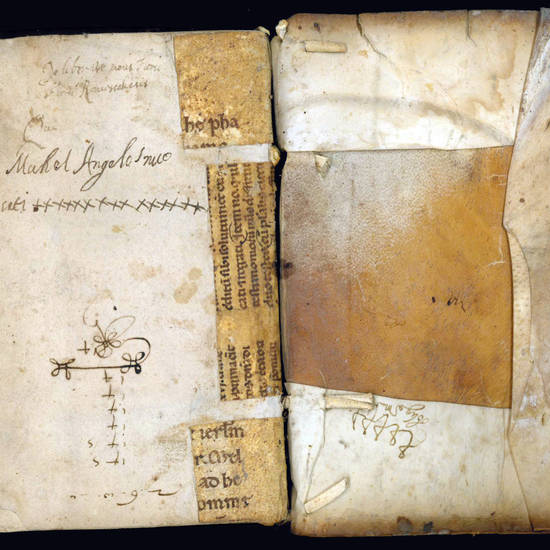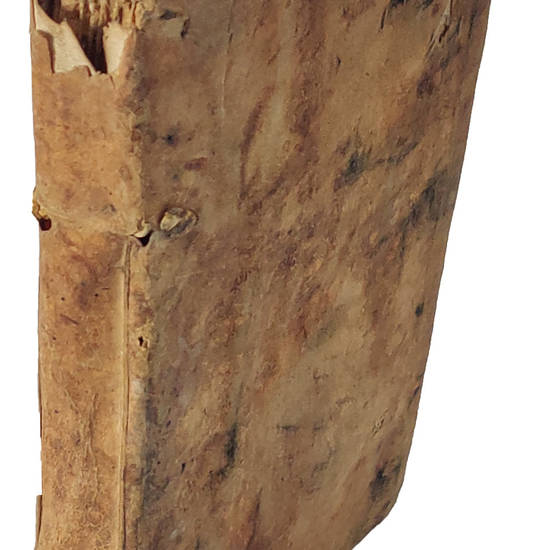Della interpetratione della lingua latina per via della Toschana libri III. Donde facilissimamente ciascheduno, che non habbi principio nessuno del latino, può imparar' tutte le ragione della lingua Toschana
Autore: FABRINI, Giovanni (1516-1580)
Tipografo: Girolama Cartolari at the author's expenses
Dati tipografici: Roma, June 1544
EARLY LATIN-ITALIAN GRAMMAR PRINTED BY GIROLAMA CARTOLARI
8vo (156x105 mm). [8], 155, [1]. Collation: *8 A-T8 V4. Roman and italic type. Large woodcut initial. Blank spaces for capitals with printed guide letters. Colophon and woodcut ornament (a crown) on last leaf verso. Contemporary flexible vellum, inked title on upper and lower edge (soiled and stained, lacking a small portion at the top of the spine, binding partly detached from the bookblock). On the flyleaves there are several contemporary ownership entries, two are dated 22 November 1570 and 12 November 1579 and are signed by Valentino and Cesare Florio, others are more difficult to read (Maria Florio, Alessandro Vaselli?). The Florio brothers, from Roncoscaglia near Sestola, were two diplomats who mostly worked as secretary to the duchy of Ferrara's ministers in Prague, Austria and Hungary (cf. G. Ognibene, Archivio Segreto Estense, Cancelleria Carteggio Ambasciatori Germania, edited by A. Palladini, 2020). Some staining and foxing, but overall a good, extremely genuine copy.
First edition, dedicated to Pope Paul III, of this early grammar whose main aim is the teaching of Latin grammar by means of the Italian grammar. Fabrini elaborates a valuable system of general and fixed rules and, even though he falls short of achieving a through theory, he has the merit of having felt the need to develop a general grammatical system in the face of the empirical nature of teaching in this field and to renew classic Latin and Italian vernacular teaching at once.
“Secondo [Fabbrini] lingua, stile, grammatica e retorica sono elementi inseparabili per arrivare ad elaborare una elegante prosa latina e volgare, anche se tutta la costruzione deve essere basata su una grammatica destinata all'apprendimento di entrambe le lingue, e intesa come una solida scienza su cui fondare il relativo insegnamento. Queste teorie sono espresse soprattutto nella sopra ricordata opera del Fabbrini del 1544, intitolata Della interpretatione della lingua Latina per via della Toschana, divisa in tre libri, di cui il primo tratta di tutti i significati in volgare delle parole che in latino si trovano nel caso nominativo; il secondo riguarda i significati in volgare delle parole che in latino si trovano nel caso genitivo, ed è a sua volta diviso in tre sezioni, il terzo è relativo ai significati in volgare delle parole che in latino si trovano nel caso dativo, ed è suddiviso in quattro sezioni, che trattano delle forme verbali latine messe a confronto nella trasformazione in volgare e viceversa. Questa stessa opera venne ristampata, senza variazioni di rilievo, e inserita in appendice in un altro scritto del Fabbrini, edito a Venezia nel 1548 e intitolato Il Terenzio latino commentato in lingua toscana e ridotto a la sua vera latinità. Successivamente, il Fabbrini riscrisse il Della interpretatione ripubblicandolo a Venezia nel 1566 con il titolo De la teorica della lingua dove s'insegna con regole generali et infallibili a tramutare tutte le lingue ne la lingua Latina, dedicandolo a Pietro de' Medici, figlio di Cosimo I” (R. Zaccaria, Fabbrini, Giovanni, in: “Dizionario Biografico degli Italiani”, vol. 43, 1993, s.v.).
Giovanni Fabrini (or Fabbrini) was born at Figline Valdarno in 1516 and studied at Florence under Lorenzo Amadei and Gaspare Marescotti. In 1544 he settled in Rome, where he made a living by giving private lessons to young aristocrats and where he published his first work, Della interpretation della lingua Latina, after whose publication he was accused of plagiarizing the teaching method followed by his masters, Amadei and Mariscotti: an accusation from which he defended himself in a letter addressed to both and included in the subsequent 1548 edition of the same work. Amadei responded by reassuring his former disciple and urging him not to listen to such inane accusations. In 1545 he published in Venice under the title De discorsi his translation from Latin into Italian of Francesco Patrizi's De institutione reipublicae. In 1546 he returned to Florence and finished the translation of Patrizi's second important work, the De regno et regis institutione (1547). A year later he was called by the Senate of Venice to teach in the public schools. His activities as a merchant brought him some wealth and allowed him to concentrate more on his literary activities. He published numerous translations into the vernacular, commentaries and grammatical and linguistic studies, among them in 1565, Teoria della lingua, dedicated to Cosimo de' Medici. He died in Venice in 1580 (cf. F. Sarri, Giovanni Fabbrini da Figline (1516-1580?), in: “La Rinascita”, II, 1939, pp. 617-640; III, 1940, pp. 233-270; IV, 1941, pp. 361-408).
Girolama Cartolari (c. 1500-1559) was an Italian printer from Perugia active in Rome between 1543 and 1559. She was the wife of printer Baldassarre Cartolari and ran the Cartolari printing workshop in Rome after his death. In the sixteen years in which she assumed the direction of the family business, Girolama printed up to twenty-six works a year, mostly continuing in her husband's footsteps in terms of production.
Edit 16, CNCE18469; UCTC, 828585; Adams, F-106; A. Erdmann, My gracious silence, Lucerne, 1999, p. 271; C. Trabalza, Storia della grammatica italiana, Milan, 1908, pp. 271-272; F. Barberi, Annali della tipografia romana di Baldassarre Jr. e Girolama Cartolari (1540-1559), in: “La Bibliofilia”, 53, 1951, pp. 90-91, no. 50.
[11050]

